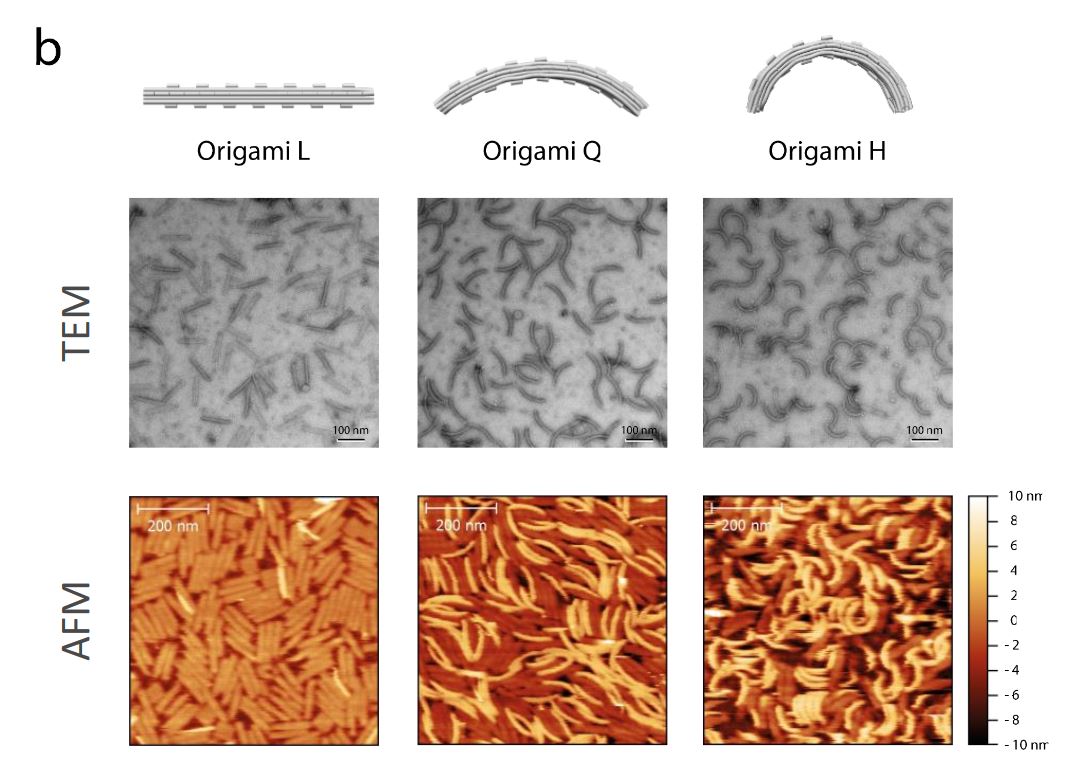In the article “Membrane sculpting by curved DNA origami scaffolds” the authors show that “dependent on curvature, membrane affinity and surface density, DNA origami coats can indeed reproduce the activity of membrane-sculpting proteins such as BAR, suggesting exciting perspectives for using them in bottom-up approaches towards minimal biomimetic cellular machineries.”*
The AFM images for this article were taken in high-speed AC mode using NanoWorld Ultra-Short Cantilevers of the USC-F0.3-k0.3 type.

Characterization of folded DNA origami nanoscaffolds.
b) Structure of folded bare origami L, Q and H was further validated using negative-stain transmission electron microscopy (TEM; scale bars: 100 nm) and atomic force microscopy (AFM; scale bars: 200nm).
*Henri G. Franquelim, Alena Khmelinskaia, Jean-Philippe Sobczak, Hendrik Dietz, Petra Schwille
Membrane sculpting by curved DNA origami scaffolds
Nature Communicationsvolume 9, Article number: 811 (2018)
DOI: https://doi.org/10.1038/s41467-018-03198-9
Please follow this link to the full article: https://rdcu.be/8zZi
Open Access: The article “Membrane sculpting by curved DNA origami scaffolds” by Franquelim et. al is licensed under a Creative Commons Attribution 4.0 International License, which permits use, sharing, adaptation, distribution and reproduction in any medium or format, as long as you give appropriate credit to the original author(s) and the source, provide a link to the Creative Commons license, and indicate if changes were made. The images or other third party material in this article are included in the article’s Creative Commons license, unless indicated otherwise in a credit line to the material. If material is not included in the article’s Creative Commons license and your intended use is not permitted by statutory regulation or exceeds the permitted use, you will need to obtain permission directly from the copyright holder. To view a copy of this license, visit http://creativecommons.org/licenses/by/4.0/.
